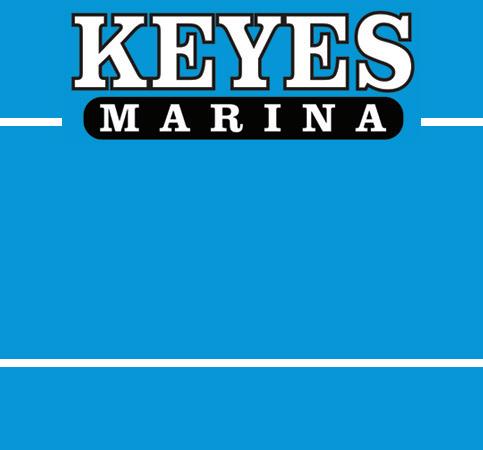
8 minute read
OUTDOORS
18 THE SUN OUTDOORS FEBRUARY 2, 2022
Dangerous seagrass bill advances
Reel Time
RUSTY CHINNIS
Florida Senate Bill 198 (Sen. A. Rodriguez, R-Doral) would allow permits that will impact seagrass and allow for replacing them elsewhere in state waters. Why is that a problem?
I posed that question to Dave Tomasko, the executive director of the Sarasota Bay Estuary Program. Tomasko has more than 30 years of experience in water quality assessments and the development of science-based natural resource plans in the Gulf of Mexico and internationally. With a Ph.D. in biology from the University of South Florida, a Master of Science in marine biology from the Florida Institute of Technology, and a Bachelor of Science in biology from Old Dominion University, Tomasko is uniquely qualified to accurately assess these kinds of proposals.
“The biggest issue is that the track record of transplanting seagrasses is poor,” Tomasko said. “Even if transplant areas gain some seagrass after planting, those that survive typically have lower densities than what they replaced. Typically, seagrass grows where it can, and for someone to grow new seagrass, something has to change - water quality must improve (very hard) or areas have to be made shallow enough to support seagrass (expensive) or wave attenuation devices have to be installed (also expensive and a nuisance to navigation). Many believe we can’t afford more losses, and so a system that makes it seem ‘acceptable’ for impacts because they can be ‘mitigated’ is not thought to be supportable by the facts or track record of such efforts. Seagrass restoration efforts in Florida have had a history of being both expensive and complex, with few success stories.”
The bill would expand the destruction of seagrass permittable in Florida with mitigation banks. The bill might also open the door to allow healthy, undisturbed seagrass areas to be impacted by the construction of boat basins and navigation channels that the Florida Department of Environmental Protection (FDEP) has routinely denied for more than 30 years. There are many other mitigating factors. Considering the massive losses of seagrass in Tampa Bay and Sarasota Bay, as well as statewide, and the unprecedented death of manatees in the Indian River Lagoon, this bill seems almost laughable to this author. Besides holding the potential of being a virtual death sentence for manatees, advancing legislation like this is unwise. To advocate planting seagrass without fixing the underlying impaired water affecting seagrasses statewide seems absurd.
Despite all these issues, coupled with the apprehensions of environmentalists, the bill was approved by the Environment and Natural Resources Committee by a vote of 3 to 2 on Jan. 18. A house companion bill, HB 349, filed by Rep. Sirois (R-Merritt Island), passed its first committee of reference on Dec. 6, 2021, and is now headed to the Agriculture and Natural Resources Subcommittee.
I had a firsthand experience recently that drove home the potential harm of legislation like this on a trip to the east coast when my friend and fellow conservationist Captain Rodney Smith, of Satellite, took me to a popular manatee viewing area at DeSoto Park in Satellite Beach. The sight of hundreds of manatees grouped together in a shallow canal was mesmerizing. When I expressed my delight at seeing so many manatees at one time, nearby environmental filmmaker Dylan Hansen informed me that just a few years ago there were twice as many manatees there. Suddenly the plight of these manatees came into sharp focus.
Citizens who care about water quality both as a quality of life issue and from an economic perspective must speak out. The best way to do that is to contact your state Senator and your state Representative and encourage them to vote “no” on these potentially disastrous bills. It might have been argued at one time that we need to strike a balance on issues like this, but that time has passed. We’ve kicked the can down the road until we’ve run out of road. Either we take the initiative or we suffer the consequences that inaction may bring.
FILE PHOTO Seagrass flats in the Intracoastal Waterway/Sarasota Bay off Anna Maria Island could be impacted by proposed state legislation.















Fish skinny water in February
CAPTAIN RICK GRASSETT
Trout and redfish should be good shallow-water options this month. You may also find trout along with blues, Spanish mackerel, pompano and flounder on deep grass flats. Look for sheepshead, flounder, reds and more around docks. Catch and release night snook fishing around lighted docks in the ICW may be a good option if it’s not too cold. Spanish and king mackerel and cobia may show up in the coastal Gulf by the end of the month.
Snook and reds remain closed to harvest south of State Road 64 in Manatee County on the west coast of Florida and south to the south bank of Gordon Pass in Collier County. Reds and snook are catch and release only in that zone until May 31. Spotted seatrout has reopened in that zone with a three-fish per person bag limit and a six-fish boat limit. Trout must be from 15” to 19” with one allowed per vessel over 19”. Full regulations and details can be viewed at https://myfwc.com/.
Since snook are temperature sensitive, I won’t target them following strong fronts when water temperatures dip below 60 degrees. However, I have had some great night trips catching and releasing snook on flies in the ICW this time of year. Since larger baitfish aren’t that plentiful this time of year, snook will gorge themselves on glass minnows and shrimp. Small white flies, like my Grassett Snook Minnow, DOA Shrimp (3” or the newer 2-3/4”), DOA Tiny TerrorEyz or CAL Jigs with shad tails and jerk worms, will all work well.
You may also find snook in rivers, creeks or canals this month. Fishing may be good in these areas on a blustery day when it isn’t fit to fish anywhere else. I like wider profile flies and lures in these areas due to the baitfish that may be found there. Fly anglers should score with wide profile baitfish patterns, such as Lefty’s Deceiver, fished on a sink tip fly line. Spin anglers should do well with CAL jigs and 4” swim baits and jerk worms, DOA Baitbusters or suspending plugs. Fish the deep spots, usually on outside bends, for the best action.
You might find reds in potholes or along the edges of bars and shallow flats when the tide is low. As the tide rises, they will feed higher on shallow flats, particularly on sunny afternoons. I like 1/16-ounce CAL jigs with shad tails or jerk worms for reds in shallow water. If it is too shallow or grassy to fish an exposed hook, a Mustad or Owner weedless hook will allow you to fish plastic baits in these areas. Fly anglers should score with lightly weighted flies, like Clousers or my Grassett Flats Minnow, with weed guards on floating lines with 10’-12’ leaders. You may also find big trout in skinny water in the same places you find reds. The same lures, flies and techniques that you use to target reds will work for big trout in those areas. I release all overslot trout since they are usually females and are important to the health of our trout fishery.

CAPTAIN RICK GRASSETT | SUBMITTED Jack McCulloch, from Lakewood Ranch, fished Gasparilla Sound in a previous February with Capt. Rick Grassett to catch and release this red on a CAL jig with a shad tail.
COCONUTS: Fines levied for owners
FROM PAGE 4
Connolly denied Najmy’s motion for continuance and found that the property violated city codes, assessing a $500 per day fine from Dec. 18-Jan. 19, a $16,500 total fine.
The case of an alleged repeat violation at unit 118/202C at The Coconuts was a little more complicated. The unit is owned by 100 73rd Street 202C LLC. The renters that code compliance officers spoke to rented the unit for a seven-day/six-night rental, which Najmy said he believes complies with city codes.
Connolly required an interpretation from City Planner Bill Brisson on city codes. Brisson said the code would require a seven-night stay, not seven days, leaving it as a violation for the property to be rented for six nights/seven days.
Najmy argued that the paperwork provided by code compliance officers specified seven days and that his client had attempted to come into compliance and believed they were within the sevenday stays booked at the unit.
Brisson said the code had been interpreted as seven 24-hour periods, technically eight days, since 2007. Najmy said he wouldn’t argue about the interpretation of the code but would like clear direction from the city’s representatives on what rental terms would be compliant so that his clients could make sure they comply with the VRC’s requirements going forward.
Speaking on behalf of the city, attorney Erica Augello said that looking on the rental agency’s website, AMI Locals, the unit was listed as available for a two-night minimum stay, well below the seven nights required by the VRC, which violates the advertising requirements of the code.
Connolly found the property in violation of the ordinance and assessed a fine of $500 per day from Dec. 22 until the property and its advertising are brought into compliance, a fine that totaled $14,500 on Jan. 19, the day it was assessed by the special magistrate. The fines against the property continue to pile up at $500 per day until it is brought into compliance.


